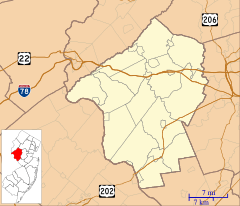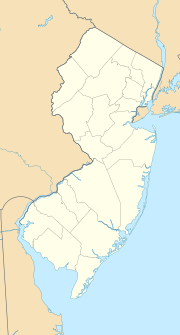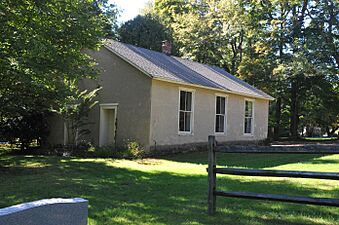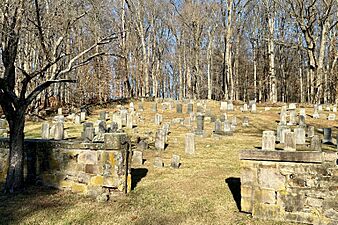Sand Brook, New Jersey facts for kids
Quick facts for kids
Sand Brook, New Jersey
|
|
|---|---|

The old Sand Brook General Store
|
|
| Country | |
| State | |
| County | Hunterdon |
| Township | Delaware |
| Elevation | 318 ft (97 m) |
| GNIS feature ID | 880245 |
Sand Brook is a small, quiet community in New Jersey. It's located in Delaware Township, within Hunterdon County. You can find it along County Route 523 and other local roads. It's known as an unincorporated community, which means it's a place with a shared identity but doesn't have its own separate local government like a town or city.
Contents
Exploring Sand Brook's History
|
Sand Brook Historic District
|
|
| Area | 27 acres (11 ha) |
|---|---|
| Architectural style | Greek Revival, Late Victorian |
| NRHP reference No. | 13000497 |
| Significant dates | |
| Added to NRHP | July 17, 2013 |
Sand Brook is home to a special area called the Sand Brook Historic District. This district covers about 27 acres of the community. It was added to the National Register of Historic Places on July 17, 2013. This means it's a place recognized for its important history and interesting buildings.
Buildings with a Story
The historic district includes 16 buildings, six structures, and two sites that help tell the story of the community. These are called contributing elements because they add to the historical importance of the area. You can see different styles of old buildings here, like Greek Revival and Late Victorian designs.
The Old General Store
One important building is the former Sand Brook General Store. It was built around 1902 by Samuel F. Fauss. This two-story building shows off the Queen Anne style, which often has fancy details and unique shapes. It was once a busy place where people bought everyday items.
The German Baptist Church
Another historic spot is the Sand Brook German Baptist Church. It was built around 1850 by a group of people from a nearby church. This church is made of stone covered in stucco and has features of the Greek Revival style. The people who went to this church were sometimes called "Moorites" because of a leader named John P. Moore and his family. Behind the church, there's a small cemetery with stone walls that is also part of the historic district.






